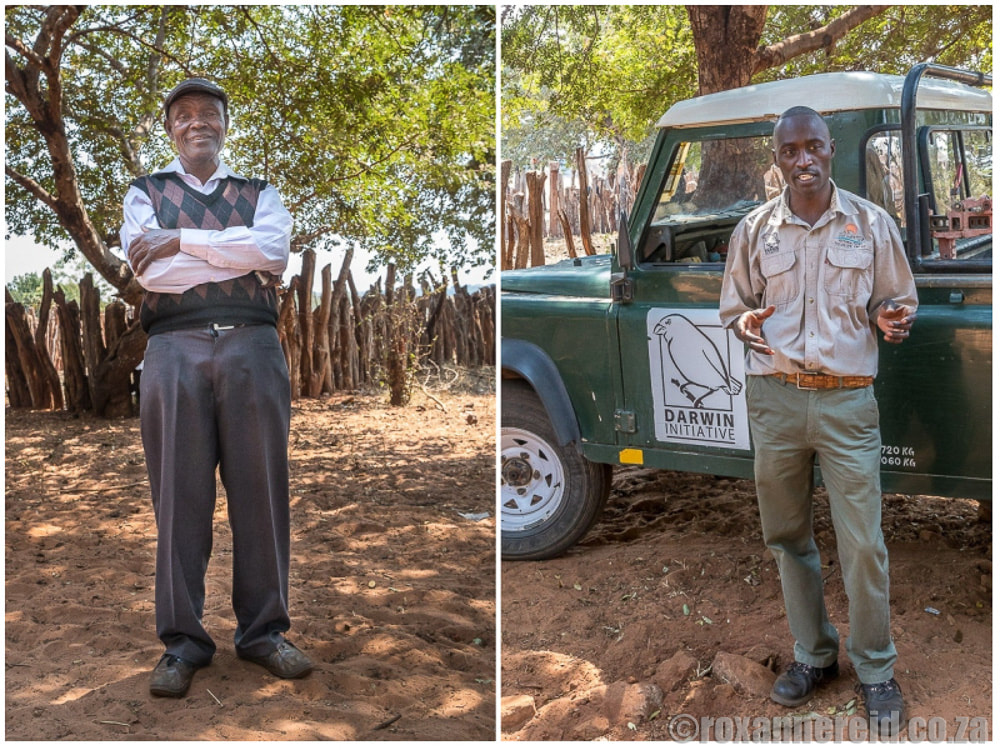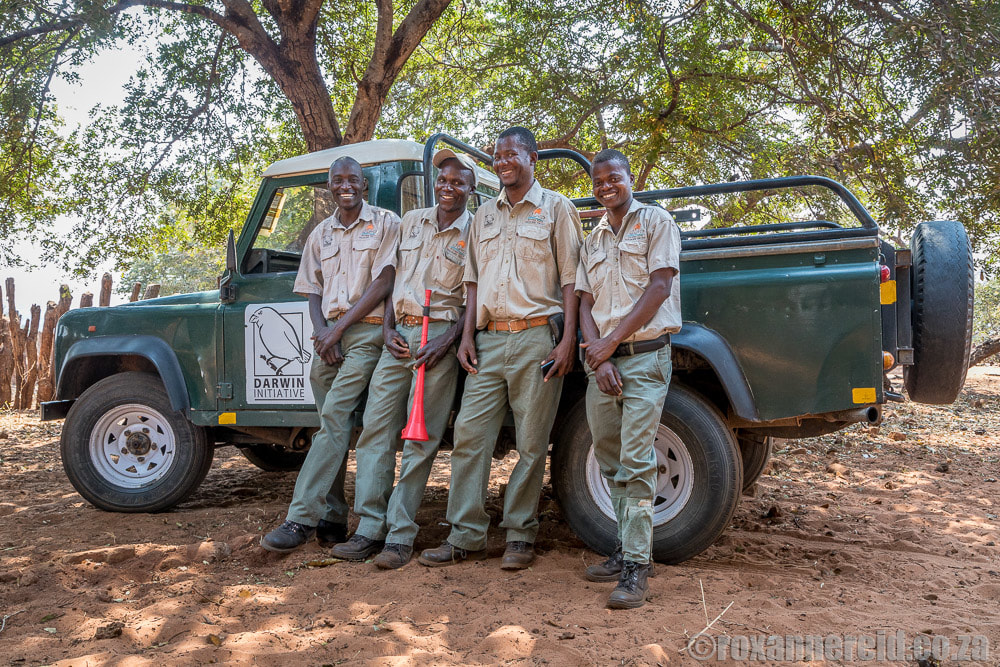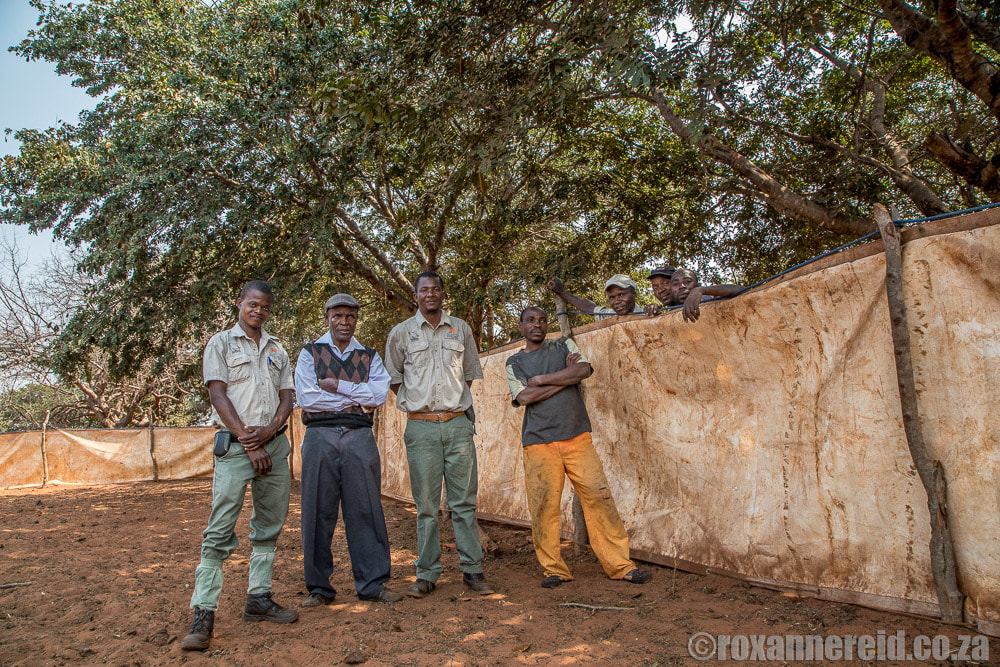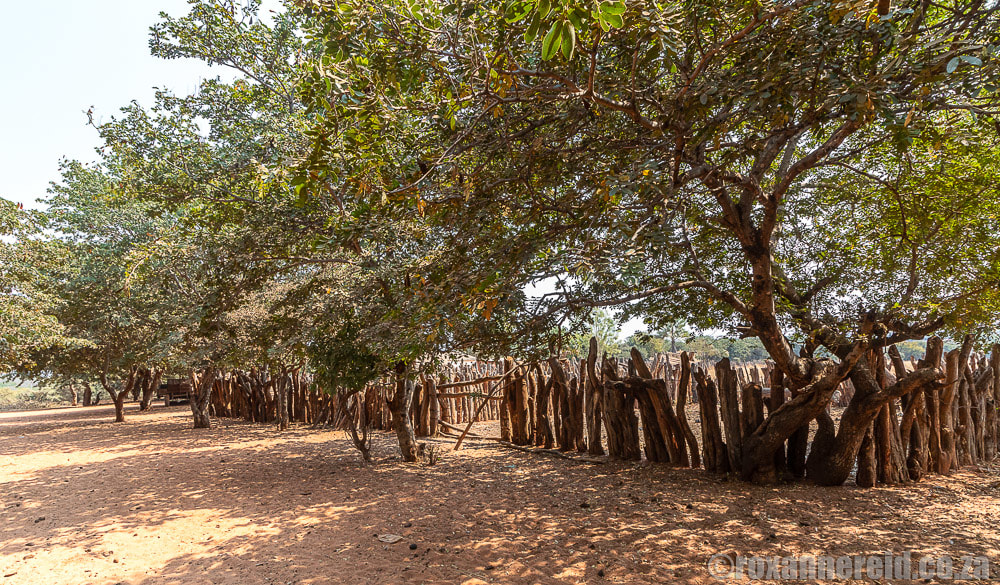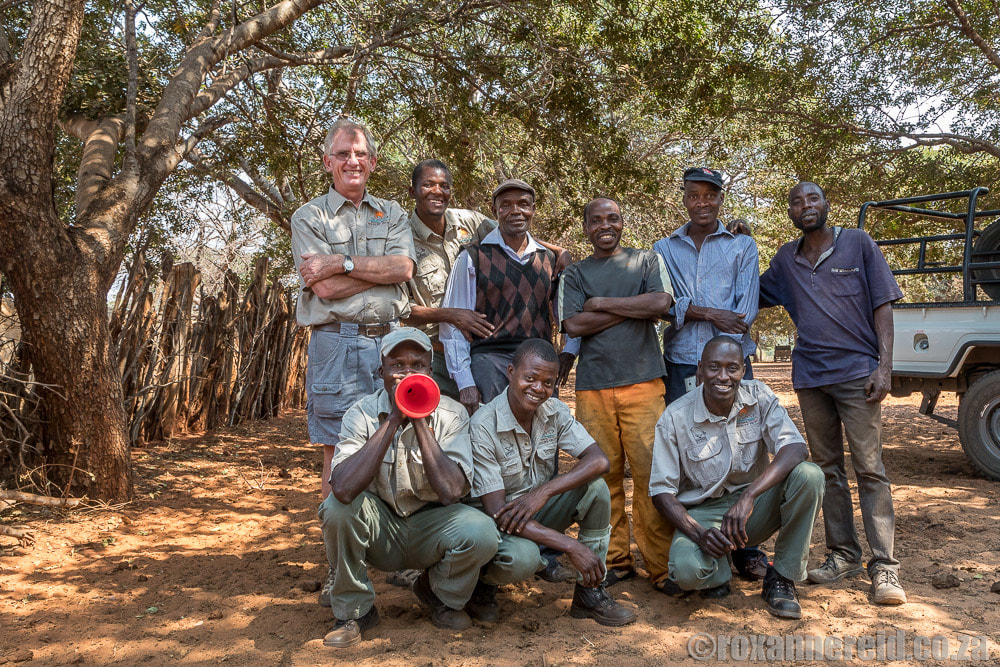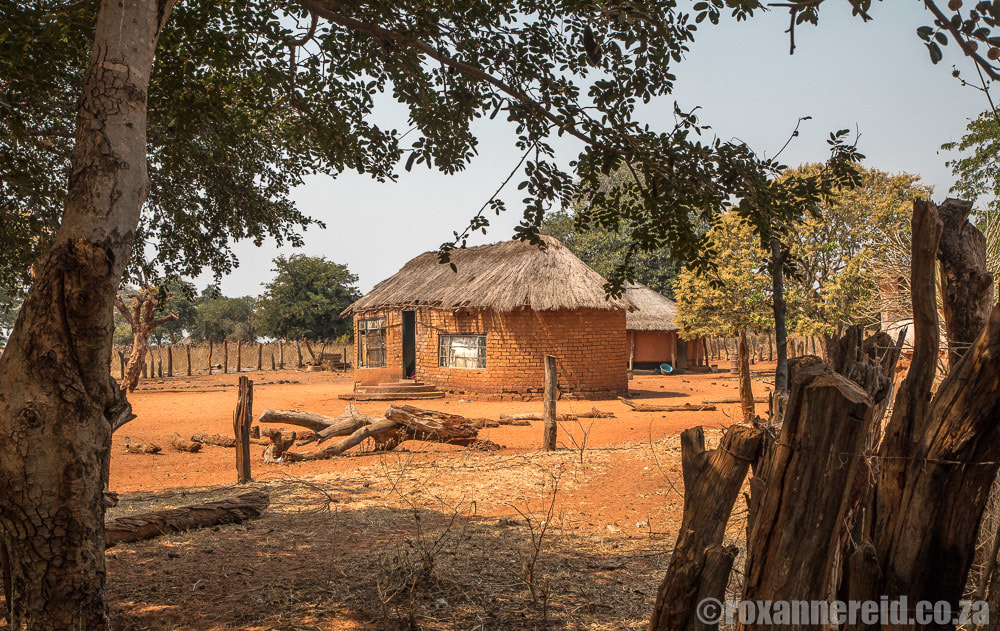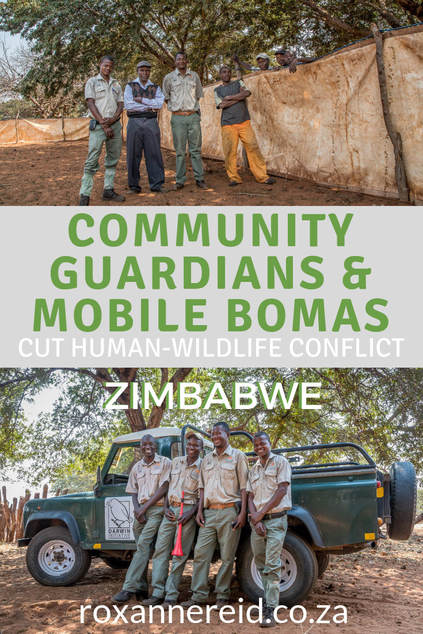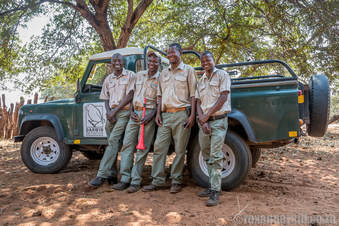
By Roxanne Reid
Conservation is easy to support when it doesn’t affect our livelihood, but what about communities where this isn’t so? Find out how a creative new project at Victoria Falls, Zimbabwe, is using community guardians and mobile bomas to cut human-wildlife conflict.
Conservation is easy to support when it doesn’t affect our livelihood, but what about communities where this isn’t so? Find out how a creative new project at Victoria Falls, Zimbabwe, is using community guardians and mobile bomas to cut human-wildlife conflict.
The year 2014 was devastating for Joel Ngwenya of the Chikandakube communal area, about a 40-minute drive from Victoria Falls in Zimbabwe. In that year alone, predators killed 30 of his cattle – an enormous loss for a small subsistence farmer.
And that wasn’t the worst of it. Forced into trying to protect his remaining cows in whatever way he could, he took his life in his hands to try to chase the lions away. During one such chase, a lioness attacked him and left him bloody and scarred, lucky to be alive.
So when Bongani Dlodlo of the Victoria Falls Wildlife Trust (VFWT) came looking for support in the local communities for a radical new experiment, Joel was one of the first to listen.
And it has changed his life.
And that wasn’t the worst of it. Forced into trying to protect his remaining cows in whatever way he could, he took his life in his hands to try to chase the lions away. During one such chase, a lioness attacked him and left him bloody and scarred, lucky to be alive.
So when Bongani Dlodlo of the Victoria Falls Wildlife Trust (VFWT) came looking for support in the local communities for a radical new experiment, Joel was one of the first to listen.
And it has changed his life.
Thanks to an introduction by Africa Conservation Travel, which aims to bridge the gap between tourism, communities and conservation, I was lucky enough to meet Bongani and Joel at Chewumba near Victoria Falls to learn more about this transformation.
The mobile boma experiment
The plan was twofold: to use mobile bomas to protect cattle from predators like lions and hyenas; and to get community guardians to patrol and protect the communities from both predators and elephants raiding crops.
The economy in the community areas around here is 39% livestock and 41% crops, but they’re on the borders of national parks and other wildlife areas. It was clear to the VFWT that some action was needed to stop losses of cattle to predators and damage to crops by elephants, as well as the killing of animals like lions.
So they did some research to identify hotspots where lions and other predators were taking cattle, and elephants were destroying crops. They then asked the chiefs of those hotspots to send 10-12 people, from which they chose one guardian for each – a total of four guardians.
The mobile boma experiment
The plan was twofold: to use mobile bomas to protect cattle from predators like lions and hyenas; and to get community guardians to patrol and protect the communities from both predators and elephants raiding crops.
The economy in the community areas around here is 39% livestock and 41% crops, but they’re on the borders of national parks and other wildlife areas. It was clear to the VFWT that some action was needed to stop losses of cattle to predators and damage to crops by elephants, as well as the killing of animals like lions.
So they did some research to identify hotspots where lions and other predators were taking cattle, and elephants were destroying crops. They then asked the chiefs of those hotspots to send 10-12 people, from which they chose one guardian for each – a total of four guardians.
Guns that shoot ping pong balls full of chilli oil, and chilli-impregnated strings around crops are already showing results against raiding elephants. The vuvuzela – stalwart of the 2010 Football World Cup in South Africa – is also proving effective in chasing predators away. ‘It’s important to blow the vuvuzela when the predators are very close, in the actual community, not when they’ve retreated to a wilderness area,’ says VFWT wildlife and research manager Roger Parry. ‘This way, predators learn what’s off limits.’
But perhaps the most spectacular success has been the mobile boma.
The community guardian programme and mobile boma idea were developed by the Hwange Lion Research Project under Oxford University's Wildlife Conservation Research Unit (WildCRU) and used in the areas around Hwange National Park for more than five years. The VFWT worked with this Lion Research Project and – with funding from the Darwin Initiative in the UK – put four of these bomas into operation at a cost of around $3500 each, with a fifth almost ready to be set up. This pays for 100m of PVC sheeting with a UV coating and nylon ropes to secure it.
But perhaps the most spectacular success has been the mobile boma.
The community guardian programme and mobile boma idea were developed by the Hwange Lion Research Project under Oxford University's Wildlife Conservation Research Unit (WildCRU) and used in the areas around Hwange National Park for more than five years. The VFWT worked with this Lion Research Project and – with funding from the Darwin Initiative in the UK – put four of these bomas into operation at a cost of around $3500 each, with a fifth almost ready to be set up. This pays for 100m of PVC sheeting with a UV coating and nylon ropes to secure it.
It takes men from the community about two hours to set up poles for supports and rig up the 25 x 25m PVC structure which holds 250 head of cattle. Each boma has a lifespan of around two years, and the VFWT is hoping that the Darwin Initiative will continue to support both the mobile boma project and the community guardians whose salaries its pays.
A large part of the success of the PVC material is that predators can’t see through it, as they can through traditional bomas. They may smell and hear the cattle, but without being able to see it they become unsure of themselves so don’t attack.
The mobile boma is left in one place for about two weeks, then moves to another area, with the people whose cattle are in the boma taking turns to have it on their land.
A large part of the success of the PVC material is that predators can’t see through it, as they can through traditional bomas. They may smell and hear the cattle, but without being able to see it they become unsure of themselves so don’t attack.
The mobile boma is left in one place for about two weeks, then moves to another area, with the people whose cattle are in the boma taking turns to have it on their land.
Of course, in some areas there has been some resistance to this lumping together of cattle from different owners. ‘There’s concern about it not being the traditional way of doing things and also about the spread of disease,’ says Bongani. But the VFWT is on hand to do inspections before the animals are herded into the communal boma, and regularly follows up with inspections after, so any diseases are picked up quickly and the animal removed before others are infected. They will also start a vaccination programme this year.
Benefits of the mobile bomas
For Joel, who is now chairman of the mobile boma at Chewumba, the benefits far outweigh any of those anxieties. First, while the mobile boma is set up on your land, the dung of 250 cattle fertilises the soil. Once it moves to another area, you can plant crops that achieve a yield of three times more than unmanured land.
Second – and even better for a man who once lost 30 cows in just one year – not a single cow has been lost while in the mobile boma. Even while they are grazing in the bush outside the boma, the mortality rate has dropped by 50% in some areas. This is thanks to the community guardians patrolling the boundaries between the communal and wildlife areas for tracks, and their influence on communities to improve protection of the cattle day and night. They alert both the VFWT and cattle owners via a whatsapp group when predators are in the area.
Benefits of the mobile bomas
For Joel, who is now chairman of the mobile boma at Chewumba, the benefits far outweigh any of those anxieties. First, while the mobile boma is set up on your land, the dung of 250 cattle fertilises the soil. Once it moves to another area, you can plant crops that achieve a yield of three times more than unmanured land.
Second – and even better for a man who once lost 30 cows in just one year – not a single cow has been lost while in the mobile boma. Even while they are grazing in the bush outside the boma, the mortality rate has dropped by 50% in some areas. This is thanks to the community guardians patrolling the boundaries between the communal and wildlife areas for tracks, and their influence on communities to improve protection of the cattle day and night. They alert both the VFWT and cattle owners via a whatsapp group when predators are in the area.
Community guardians also use the loud noise that vuvuzelas make to help scare off predators. The hope is that in time they can arm herders with vuvuzelas too. A big step forward is that the communities have started to help move lions away on their own, without waiting for wildlife authorities to come and do it for them.
Third is the benefit of combining labour because all the cows from the boma graze together so fewer herdsmen are needed.
Third is the benefit of combining labour because all the cows from the boma graze together so fewer herdsmen are needed.
The future
Research has shown that 45% of cows taken have been killed by hyenas, not lions. Also, 75% of cattle killed have a bell or there’s a bell in the herd, so it’s evident that lions and hyenas see these as a something of a dinner bell. Changing the mindset of people will take time, but this may be another way of preventing human-predator conflict while cattle are grazing in the veld.
In an age when we’re finally starting to understand the importance of conserving wildlife for the good of our planet, it’s wonderful to see creative new ways of solving the well-worn problem of human-wildlife conflict.
More good work
The VFWT does lots more conservation work, from wildlife research, rescue and rehabilitation, laboratory diagnostics, and other work that benefits the local communities.
If you’d like to donate to their efforts or in support of mobile bomas and lion conservation, you can do that via their donations page.
Like it? Pin this image!
Research has shown that 45% of cows taken have been killed by hyenas, not lions. Also, 75% of cattle killed have a bell or there’s a bell in the herd, so it’s evident that lions and hyenas see these as a something of a dinner bell. Changing the mindset of people will take time, but this may be another way of preventing human-predator conflict while cattle are grazing in the veld.
In an age when we’re finally starting to understand the importance of conserving wildlife for the good of our planet, it’s wonderful to see creative new ways of solving the well-worn problem of human-wildlife conflict.
More good work
The VFWT does lots more conservation work, from wildlife research, rescue and rehabilitation, laboratory diagnostics, and other work that benefits the local communities.
If you’d like to donate to their efforts or in support of mobile bomas and lion conservation, you can do that via their donations page.
Like it? Pin this image!
You may also enjoy
Victoria Falls Wildlife Trust: behind the scenes of your Victoria Falls safari in Zimbabwe
8 things to do at Victoria Falls, Zimbabwe
Copyright © Roxanne Reid - No words or photographs on this site may be used without permission from roxannereid.co.za
Victoria Falls Wildlife Trust: behind the scenes of your Victoria Falls safari in Zimbabwe
8 things to do at Victoria Falls, Zimbabwe
Copyright © Roxanne Reid - No words or photographs on this site may be used without permission from roxannereid.co.za
